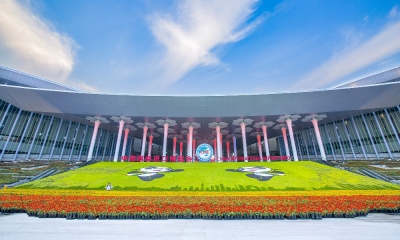Chinese Economy Is Resilient

Chinese economy shows its resilience again as the country’s GDP in 2023 surpasses the estimated global rate of 3 percent and ranks top among major economies.
Leading international organizations have issued the world economic prospect for 2024 which showed that global gross domestic product (GDP) growth will not differ significantly in 2024 from a year earlier, but experts expect a slowdown. The Organization for Economic Cooperation and Development (OECD) expects a global growth rate of 2.7 percent for 2024, a decrease from the anticipated 2.9 percent growth in 2023. World Bank estimated world GDP to grow 2.4 percent in 2024, down from 2.6 percent in 2023.
In the latest survey conducted by the World Economic Forum, 61 percent of the participating senior economists believe that the global economy would weaken in 2024. Optimism emerges when it comes to the outlook for inflation, with 86 percent of chief economists believing the worst of the global inflationary surge will have subsided in a year’s time.
Expectations around monetary policy fall into line with this, with 93 percent of respondents expecting the pace of interest rate rises to slow in inflation-prone economies. Four-fifths of chief economists predict a decrease in the synchronization of monetary policy across central banks.
Geopolitical and domestic political issues are other unsettling factors. Nine out of ten economists surveyed believe geopolitics will create economic volatility in the year ahead.
Compared with the growing uncertainties of global economy, Chinese economy shows its resilience again as the country’s GDP in 2023 surpasses the estimated global rate of 3 percent and ranks top among major economies.
According to data released by the National Bureau of Statistics (NBS) on January 17, China’s GDP grew 5.2 percent year on year in 2023, higher than the annual target of around 5 percent, reaching a record of 126.06 trillion yuan (about $17.71 trillion).

China’s GDP growth is expected to keep around 5 percent in 2024, if investment rises by 4 to 5 percent, consumption rises by 6 to 7 percent, and exports return to growth, according to a policy adviser to the central bank. China has room to increase support for the economy, given that its central government’s debt burden is relatively low and consumer prices are also low.
China has taken measures to tackle challenges of huge debt in real estate market and declining consumer confidence, while continuing to upgrade industrial structure and improve business environment.
The Chinese government is taking more measures to stimulate infrastructure projects to advance the economic wheel this year. It is also expected that the Chinese government will reduce interest rates and stabilize the real estate sector, which is expected to be more stable in 2024. The construction sector in China have been booming for more than 20 years and it is normal to have some time to digest that huge stock. China has also increased demand for new houses which will balance this market soon.
In my view, all growth pessimists in China are likely to be disappointed, as we expect the country to maintain a moderate growth rate of around 5 percent this year. There are two main factors that support my view.
First, the manufacturing sector is set to expand on the back of improving real incomes globally, an easing energy crisis, and the need to restore inventory levels after a long period of de-stocking. This factor will be supportive of the Chinese manufacturing sector, which is currently suffering from weak global demand, despite the ongoing recovery in the domestic economy.

Secondly, the process of recovery of the service sector in China has already begun. With more official support and financial as well as monetary incentives, this sector will be able to maintain its regular level of activity and perhaps achieve investment booms as well.
The International Monetary Fund (IMF) last month revised upward its growth forecast for China to 5.4 percent for 2023, attributing the revision to a “strong” post-COVID recovery.
The world’s second largest economy will also cultivate new consumption growth areas such as smart homes, recreation and tourism and sports events.
It is expected that the effects of last year’s treasury bond issuance, interest rate, tax and fee cuts and other policies will continue this year.
China would also continue to monitor its real estate market and meet the reasonable financing needs of real estate companies. With the concerted efforts of all parties, the policy objectives of real estate risk prevention and market stabilization can be fully achieved.
China has shown signs of recovery as progress has been achieved in technology development and important advancements made in building a modern industrial system. But President Xi Jinping acknowledged in his New Year address that difficulties must be tackled to achieve further economic recovery.
Last month the annual central economic work conference set out priorities for 2024, including science and technology innovation, stronger demand, stability, rural development, integration and low carbon and ecological investment.
China’s electric vehicle and green energy industries have made strides while other sectors such as semi-conductors have struggled to make headway.
China is the largest trading partner for more than 130 countries and it has jumped to the 11th of the Global Innovation Index in 2022 from the 34th in 2012.
The specific growth target for 2024, widely expected to be at least 5 percent, is not far from achieving despite all the global economy factors. The Chines economy is really big and resilient without doubt.
The article reflects the author’s opinions, and not necessarily the views of China Focus.
 Facebook
Facebook
 Twitter
Twitter
 Linkedin
Linkedin
 Google +
Google +







